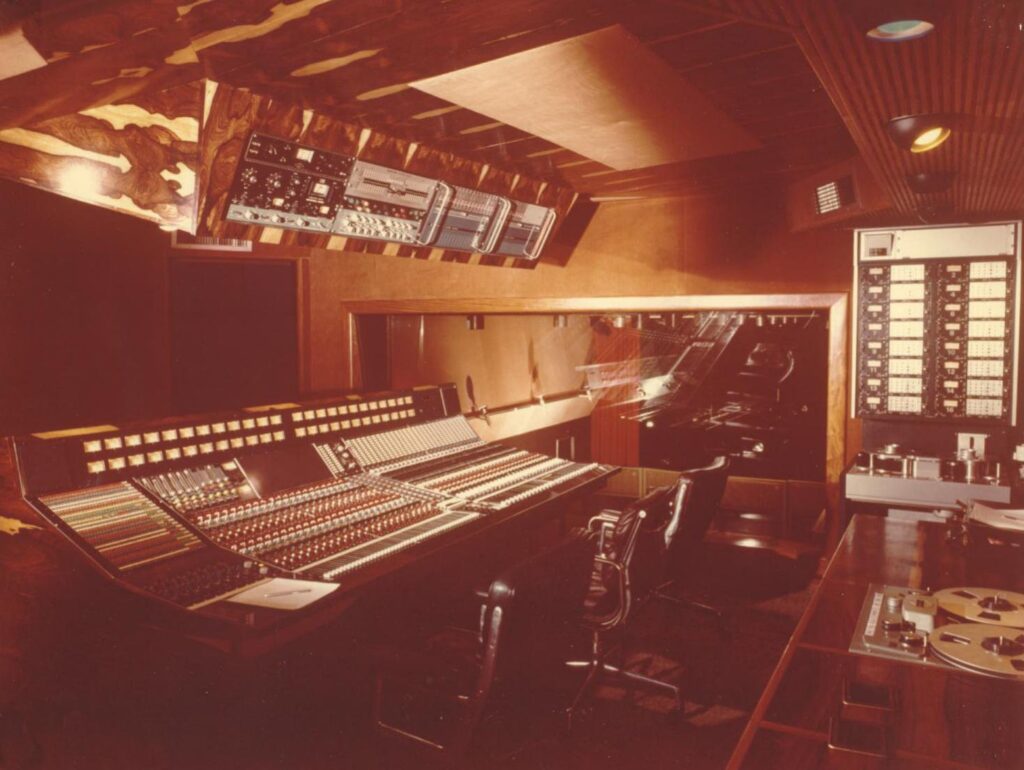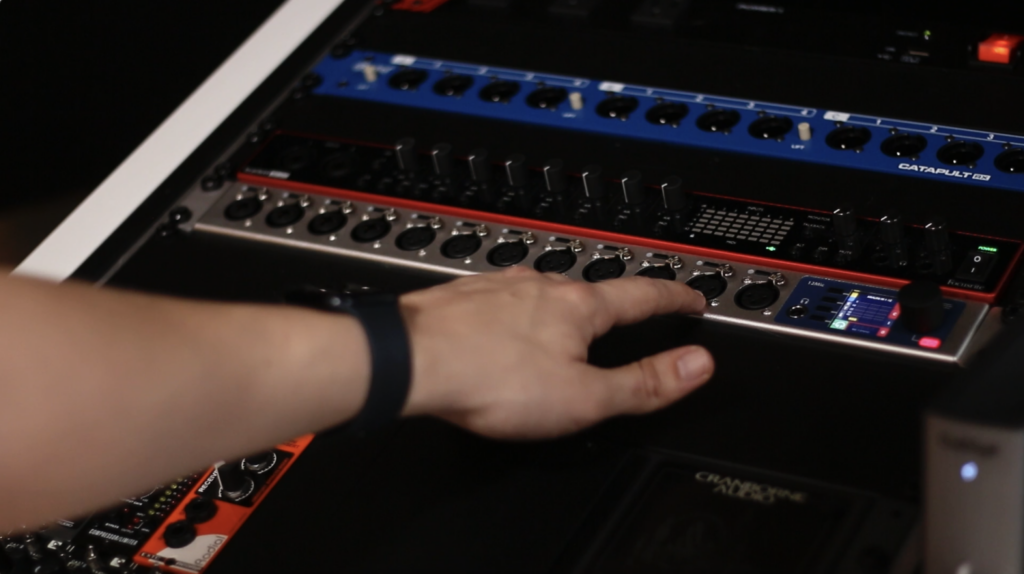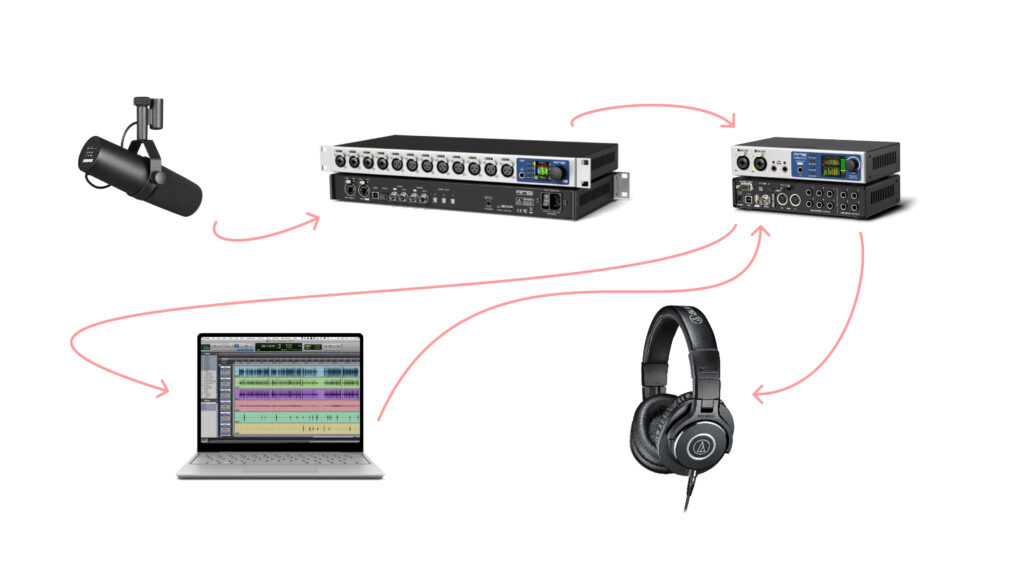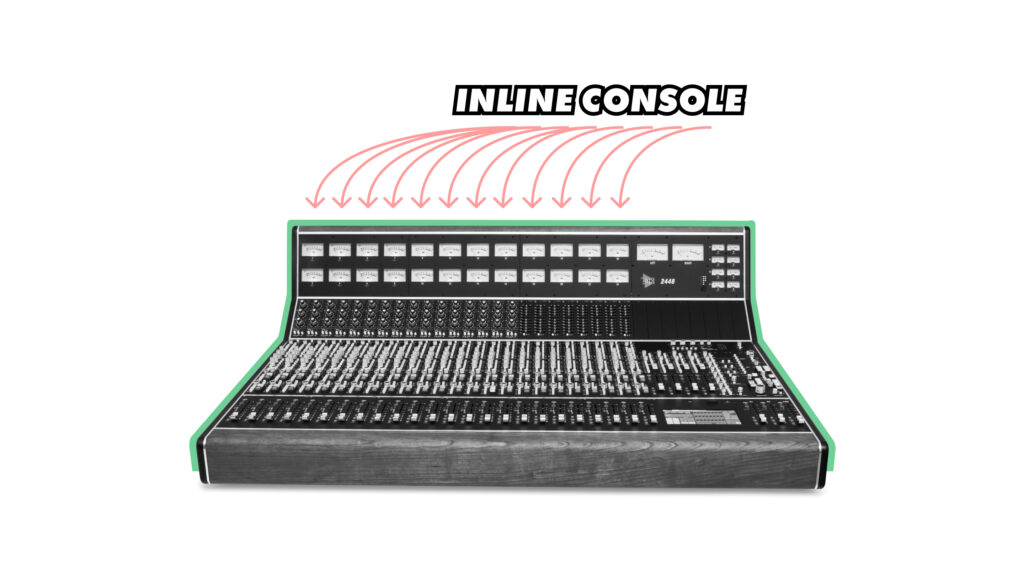Analysis
Do You Really Need a Mixing Console in a Modern Studio?
In photos of big commercial studios, you almost always see a giant mixing console… But is this really necessary in the modern recording and mixing studio?

Well, just like everything else in audio, it depends. In this article, I’m here to help you decide if you need a mixer in your studio (or if you can get the same benefits from more modern tools).
Thanks to RME for sponsoring this discussion and supporting audio education.
Let me start by saying that, as a 31-year-old, I started my audio career long after the digital audio revolution had begun. I was fortunate enough to work on an analog SSL Duality console in college, but since graduating from college, I’ve mostly worked on studio projects using a keyboard and mouse (so that’s the workflow I know best).
When you’re asking someone about the benefits of a mixing console in a studio, this is something you should keep in mind…
If the person you’re asking started working with audio in the analog days, BEFORE digital audio was the norm, they will probably tell you how much easier and faster a console can be. This is especially true if they worked in a commercial studio with a high-quality console.
On the other hand, if you ask someone who has mostly worked without a console, they will probably tell you that they feel more comfortable and efficient working in-the-box, and their primary concern will be where to put the keyboard and mouse when there’s a big console covering the desk…
There are benefits and drawbacks to all methods – analog, in-the-box, and hybrid. It ultimately depends on your preferences, your workflow, and your budget. So let’s look at how mixers have traditionally been used in studios and some of the more recent technologies that can be used instead. And you can decide for yourself which is better.
Benefit #1: Tracking
The first reason that large-format consoles are used in studios is that they provide multiple channel strips with the essential tools you might need to record an instrument (such as a mic preamp, a high-pass filter, an EQ, a compressor, a fader, and potentially even more).
This is very useful when you’re tracking a band…
Let’s say you’ve got 8 drum mics, a bass, an electric guitar, an acoustic guitar, a lead vocal, and 3 background vocals. That’s 15 channels of microphones!
For a basic setup in the days of tape, each mic would connect to its own channel on the mixer. The engineer would set the preamp level for each channel and then each channel on the mixer would record to a separate track on the tape machine.
This was a relatively clean solution, compared to connecting every microphone to a stand-alone preamp before sending all of those channels to the tape machine. And in this way, mixers were actually a relatively COMPACT unit for accomplishing essential tasks.
By today’s standards, this sounds ridiculous because we can now accomplish the essentials with a laptop and a basic audio interface. The audio interface has built-in mic preamps and the DAW is the multitrack tape machine.
Now, my audio interface (the RME Fireface UCX II) only has 2 built-in mic preamps. In order to record the 15 microphones for the hypothetical band, I would need to use some external mic preamps, where the microphones connect to the external preamps and the preamps connect to the inputs on the interface.
This 12Mic Dante could be connected with ADAT (a digital audio connection) and these other preamps could be connected with analog cables.

Using external preamps is useful (even if you have a mixing console with built-in preamps), because it provides some variety. For example, the preamps in the RME 12mic Dante are exceptionally clean while other preamps can be used to intentionally add colorful harmonic distortion.
That’s why you’ll usually find outboard preamps in most studios, whether they have a mixing console or not.
All of my outboard preamps are relatively compact, consisting of various channels organized efficiently within rack units. There are other mic preamps that take up several rack units for a single channel, but all of this is still much more compact than a mixer.
Of course, a mixer will also often have built-in EQ and dynamics processing, which is something that you won’t find in a basic audio interface. But, “Why would you add EQ and compression before recording? Can’t you just use EQ and compression later on in the mixing phase?”.
While you CAN save all processing for the mixing phase, you don’t want to fall into the “fix-it-in-post” trap, where every problem in the mix becomes tomorrow’s problem. You’ll start to make better music, more efficiently, when you start “mixing” during the recording process.
This can include being thoughtful about mic placement and it can also include using EQ and dynamics BEFORE the signal hits the DAW. These changes are permanent, but if you make them skillfully, it takes you one step closer to the sound of the final record.
Making skillful mixing decisions takes some practice. To help with this, you can download this free Ear Training Guide.
The ability to process audio before it reaches the DAW is also useful for creating headphone mixes for the performers. Sometimes, making the performer feel more comfortable with some EQ and reverb in their headphone mix can make for a much better performance.
With a small to medium session, a powerful computer, and an efficient audio interface, you can run the signal from the microphone, to the preamp, to the audio interface, through some plugins in the DAW, and back out of the interface into the performers’ headphones.

At a certain point, however, you may reach the limits of your computer’s processing, forcing you to increase the buffer size of your session.
When you increase the buffer size, you also increase the monitoring latency (that very short period of time between the moment the performer plays a note on the instrument and the moment they hear that note in their headphones). Excessive latency is very distracting to a performer, so you want to avoid it however you can.
An analog mixer has effectively zero latency (regardless of the buffer size in the DAW). Therefore, a mixer with some post-FX auxiliary outputs is a good tool for providing a dialed-in headphone mix to a musician with zero latency.
To mimic this functionality without a mixing console, you’re going to need more than a basic, entry-level audio interface…
The RME Fireface UCX II has built-in EQ and dynamics on every channel and an incredibly flexible routing software called TotalMix.
Using TotalMix, I can create a headphone mix for each performer, complete with EQ, dynamics, reverb, and echo. And these effects don’t need to run in a DAW, so there is no need to worry about monitoring latency. Also, I can choose if I want these effects to be recorded or if I ONLY want them for monitoring.
Benefit #2: Mixing
Another reason that mixing consoles are used in studios is for… well, mixing.
In the past, there was no DAW for mixing. Instead, the multitrack output of the tape machine would have connected to the inputs of the console, either through the same input channels (on an “inline” console) or on a separate bank of channels (on a “split” console).


The tape machine played back the multitrack recordings and the mixer would be used to sum all of this into two tracks (left and right), which would be recorded to a stereo tape machine as the final mix.
Not only did the mixer sum all of these signals together into a final stereo mix, but it also provided faders for controlling the relative level of each instrument as well as channel strips for shaping the tone of each track individually.
All of this happens within the DAW in most modern studios, allowing engineers to use dozens of unique effects plugins rather than being restricted to merely the onboard effects on the mixer.
To be fair, mixers will usually have inserts and FX sends on each channel, which can be used to add in an outboard EQ as an insert or a reverb plate with an FX send and return. The same thing can be done within the DAW session if you have some extra outputs and inputs on your audio interface.
For example, I can route this vocal track out of my DAW through output 5 on my audio interface, through this analog compressor, and back in through input 5 (or I could do that digitally using the ADAT connections on this 500 chassis and the ADAT in and out on my UCX II).

There’s one particularly huge difference between mixing with plugins versus mixing with physical channel strips or outboard gear, and that’s recall.
If you need to take a break from your current mixing session in a DAW to work on another project, you just click File, Save As…, and close the session. All of the faders, pan knobs, and plugin settings will be there for you when you open it up next time.
If you’re using a mixing console, you better get your pencil and paper ready, because analog consoles rarely have motorized knobs and faders for every channel strip. So, in order to pick up on a session where you left off, you’d need to manually reset the channel strips to exactly as they were at the end of the previous session.
This is also true for any outboard gear you use in a mix – with or without a DAW.
Even if you could recall all of the settings in your analog mix, a professional mix is rarely a set-it-and-forget-it situation… Many have described the act of mixing a song on an analog console as a “performance”, where the console is the instrument and the mix engineer is the performer.
During the final mixdown to the stereo tape machine, the mixing engineer would actually make adjustments throughout the song – bringing up the guitar during the solo, riding the vocal levels during a particular phrase, and fading out the master fader at the end of the song. If you missed a cue, you would need to rewind the tape and try again!
With modern tools, you can automate all of this within the DAW. Just go to the track, expose the automation lane for the control you’d like to automate, and program in the changes by drawing or by moving the knobs in real time.
There’s definitely something to be said for the tactile feedback you get when using a real knob on a console or an outboard effect, but the trade-off is that you can’t automate or recall settings on those devices. So there’s not a clear answer for which is better.
I like to use the TotalMix iPad app for tactile control of headphone mixes and routing, and I’ve been looking into buying a DAW control surface so that I can get this same tactile connection with any plugin in my session.
Let’s put it this way: I wouldn’t sacrifice automation and recallability for tactile control, so I rarely mix with outboard effects. But it would be nice to have tactile control of my plugins with a control surface so that I can interact with them in a more natural way for automations.
I’ll briefly mention that consoles can also have “a sound” of their own – the combined effect of the console’s electronic components, age, temperature, etc.
Personally, I don’t know… It’s something to consider, but for me this is far too subtle to justify the additional expense, space, and workflow limitations.
Benefit #3: Routing & Utility
Mixers can also be useful for more general tasks, aside from recording and mixing.
For one, they often provide monitor controls. This could include monitoring level for headphones and studio monitors, as well as buttons for checking a mix in mono or switching between different pairs of studio monitors.
In addition to the TotalMix iPad app, I also use this RME ARC USB controller. With this, I can control the monitoring level through my studio monitors and my headphones. I can switch between my two pairs of monitors with the “Speaker B” button, dim the speakers with the “Dim” button, or check the mix in mono with the “Mono” button.
There are also 8 snapshot buttons that will instantly recall routing presets. For me, this is especially useful for switching between different tasks like recording, mixing, live streaming, and filming a video.
While it would be cool to set all of this up with a beautiful mixing desk, it would be far less efficient to switch between tasks. It’s hard to beat the efficiency of loading a preset with the press of a button.
Mixing consoles will usually have a built-in talkback microphone that is activated by pressing and holding the talkback button, which can be used to communicate with musicians who are in a different room during a session. The same thing happens by selecting a microphone connected to my interface and pressing the “Talkback” button to speak.
To sum this up, consoles aren’t obsolete – but they aren’t entirely necessary either, especially if you have an interface with the features I’ve discussed here.
